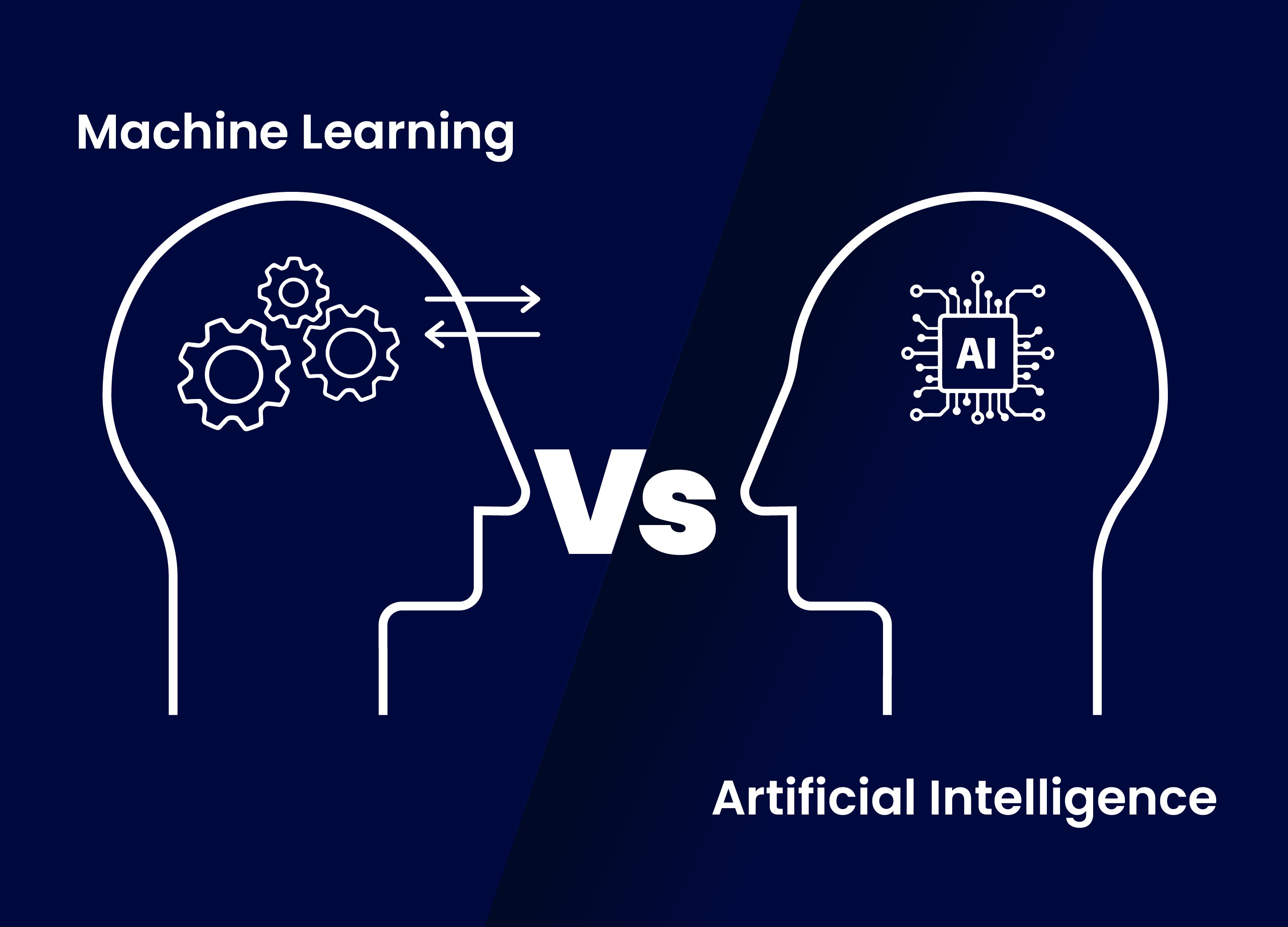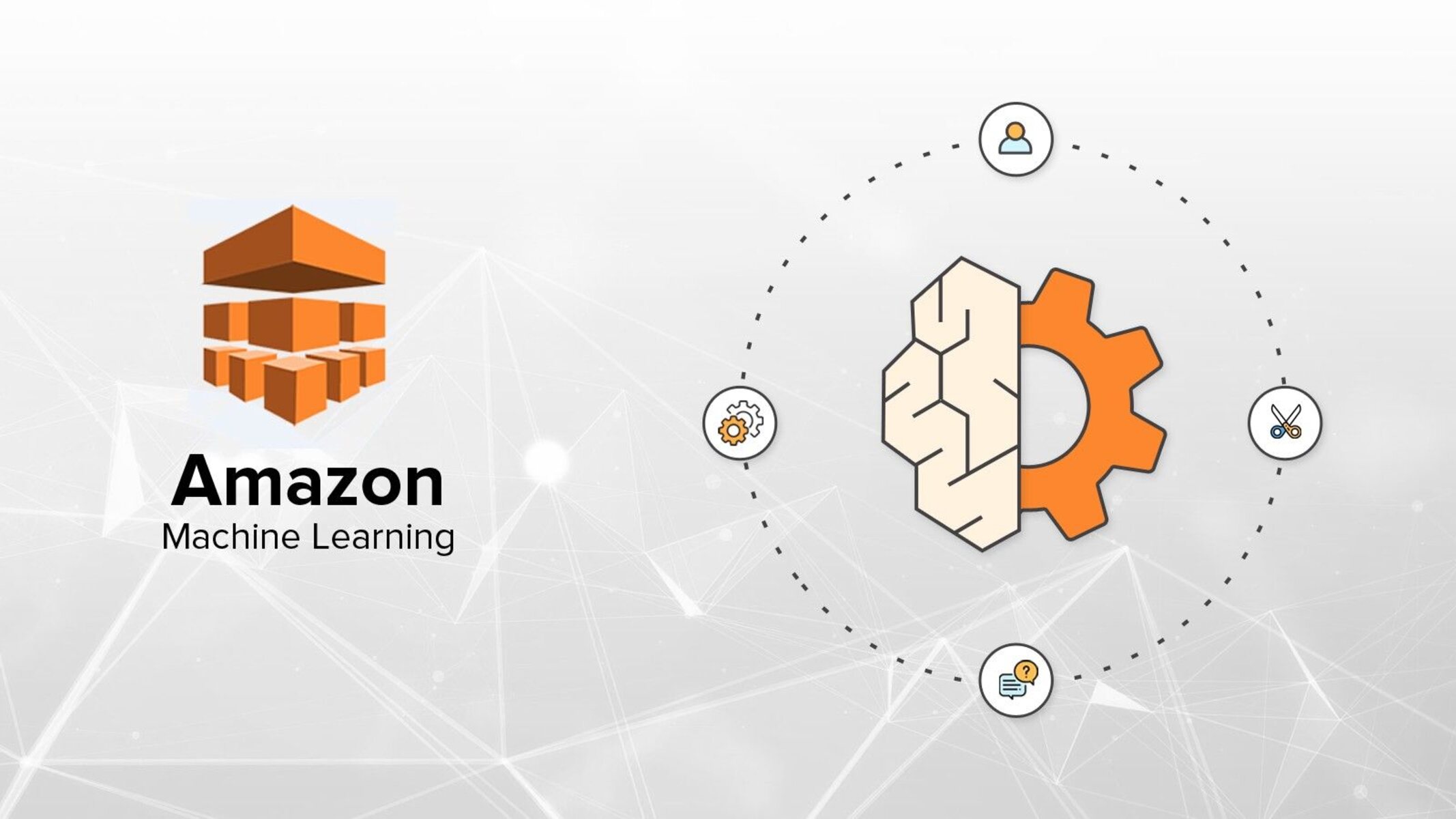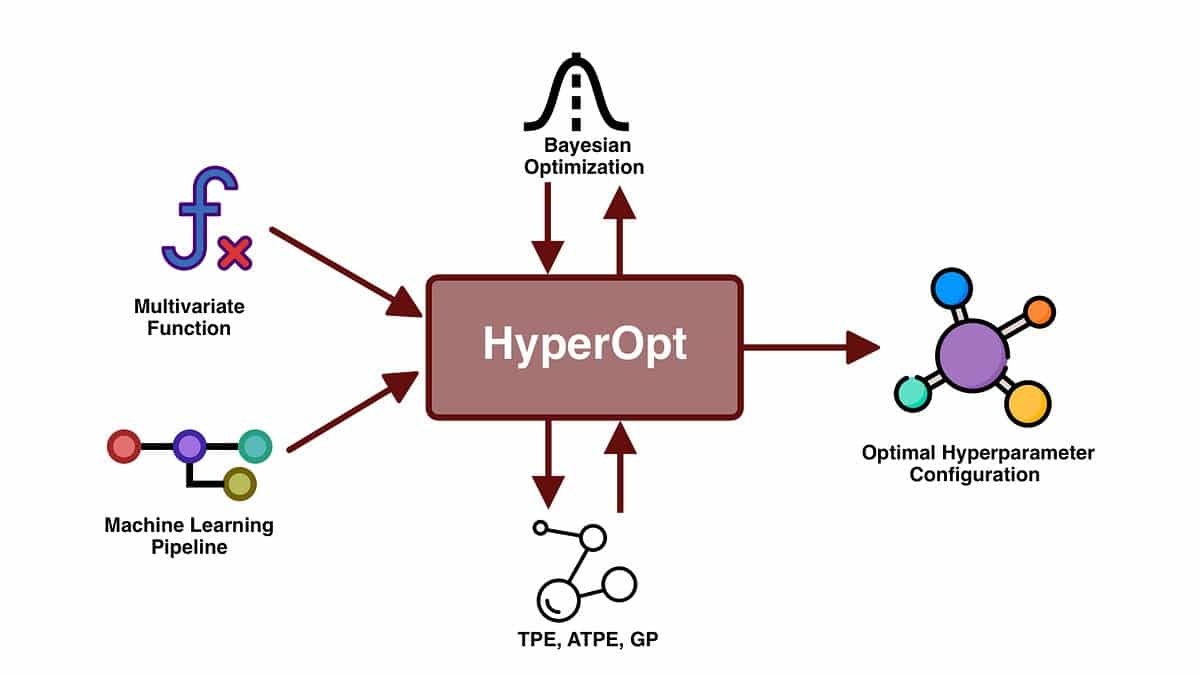Introduction
Welcome to the exciting world of machine learning (ML)! In today’s rapidly advancing technological landscape, ML has emerged as a game-changing field with the potential to revolutionize various industries. From personalized recommendations on streaming platforms to fraud detection systems, machine learning has become an integral part of our daily lives, even if we are not aware of it.
Machine learning, a branch of artificial intelligence, enables computers to learn from data and make predictions without being explicitly programmed. It is an iterative process that allows systems to improve their performance over time by automatically identifying patterns and adjusting their models accordingly.
With the massive amounts of data being generated every second, machine learning algorithms provide the capability to extract valuable insights and drive informed decision-making. By analyzing patterns, trends, and correlations within data, ML algorithms can uncover hidden patterns and make accurate predictions, enabling businesses to optimize their operations, enhance customer experiences, and innovate in ways that were once unimaginable.
This article will provide a comprehensive overview of machine learning, including its definition, working principles, types, algorithms, and applications. Additionally, we will explore the benefits and limitations of machine learning, as well as the challenges in implementing this technology successfully.
So, whether you are a tech enthusiast, a business professional, or simply curious about the inner workings of machine learning, join us on this journey to unravel the fascinating world of ML and discover how it is reshaping our future.
What is Machine Learning?
Machine learning is a subset of artificial intelligence that enables computer systems to learn from data and improve their performance without being explicitly programmed. It is based on the idea that machines can automatically learn and adapt through experience, allowing them to make predictions and decisions based on patterns and insights derived from large amounts of data.
At its core, machine learning involves the development of algorithms that can analyze data, identify patterns, and make future predictions or decisions based on those patterns. These algorithms are designed to continuously learn and improve as they are exposed to new data, enabling machines to become more accurate and efficient over time.
There are various types of machine learning techniques, including supervised learning, unsupervised learning, and reinforcement learning. In supervised learning, the machine is trained on labeled data, where the desired outcome or target variable is known. The machine learns by mapping input variables to the corresponding output variables, allowing it to make predictions on unseen data.
In unsupervised learning, the machine learns from unlabeled data, where the desired outcome is not known. The algorithm analyzes the data to find patterns, group similar instances together, or discover hidden structures within the data. Unsupervised learning is particularly useful in tasks such as clustering, anomaly detection, and dimensionality reduction.
Reinforcement learning involves training a machine to make decisions based on a reward feedback mechanism. The machine interacts with its environment and learns through trial and error, receiving positive or negative feedback based on its actions. Over time, the machine learns to make optimal decisions that maximize its rewards.
Machine learning algorithms can be applied to various domains, including natural language processing, computer vision, fraud detection, recommendation systems, and many more. These algorithms are capable of extracting valuable insights from complex and large-scale data, enabling businesses to make data-driven decisions, automate processes, and gain a competitive edge.
Overall, machine learning is a powerful tool that empowers computers to learn and improve from experience, enabling them to perform tasks that were once thought to be exclusive to human intelligence. By harnessing the potential of machine learning, organizations can unlock novel opportunities, enhance customer experiences, and drive innovation in an increasingly data-driven world.
How Does Machine Learning Work?
Machine learning algorithms work by processing large amounts of data and extracting meaningful patterns and insights to make predictions or decisions. The process of machine learning can be broadly divided into four key steps: data collection and preprocessing, model training, model evaluation, and making predictions.
The first step in machine learning is data collection. High-quality, diverse, and representative data is crucial for training accurate models. This data can come from various sources such as databases, sensors, or online platforms. Once the data is collected, it needs to be preprocessed to remove noise, handle missing values, and normalize the data to ensure uniformity.
After preprocessing, the data is divided into two subsets: the training set and the test set. The training set is used to train the machine learning model, while the test set is used to evaluate its performance. It is important to have a sufficiently large training set to capture a wide range of patterns and variations within the data.
The next step is model training. During this stage, the machine learning algorithm analyzes the training data and identifies patterns and relationships between the input variables and the desired output. The algorithm adjusts its internal parameters and learns from the data to create a mathematical model that can make predictions or decisions based on new, unseen data. The process of model training involves iterative optimization to minimize the error or loss function of the model.
Once the model is trained, it needs to be evaluated to assess its performance and generalization capability. The model is tested on the test set, and its predictions are compared to the known outcomes. Various metrics, such as accuracy, precision, recall, and F1 score, are used to evaluate the model’s performance. The evaluation helps identify any overfitting or underfitting issues and guides further refinement of the model.
Finally, the trained and evaluated model is ready to make predictions or decisions on new, unseen data. The model takes the input variables, processes them through its learned patterns and relationships, and produces the desired output. This prediction or decision-making process is the essence of machine learning, enabling systems to automate tasks, make recommendations, classify data, detect anomalies, and much more.
It is worth noting that machine learning is an iterative process. As new data becomes available, the model can be retrained and refined to improve its performance over time. This allows the model to adapt to changing patterns and dynamics within the data, ensuring its relevance and efficacy in real-world scenarios.
Overall, machine learning works by leveraging the power of data, algorithms, and iterative refinement to enable computers to learn from experience and make accurate predictions or decisions. It is a versatile and dynamic field that continues to evolve, driving advancements in various industries and shaping the future of technology.
Types of Machine Learning
Machine learning can be categorized into three main types: supervised learning, unsupervised learning, and reinforcement learning. Each type serves different purposes and is applicable in various scenarios.
Supervised learning is the most common type of machine learning. In this approach, the machine is trained on labeled data, where the desired output is known. The algorithm learns to map input variables to their corresponding output variables by identifying patterns and relationships within the data. Supervised learning algorithms can be further divided into two subcategories: classification and regression.
In classification tasks, the machine learning model predicts discrete categorical labels based on the input variables. For example, classifying emails as spam or non-spam, predicting whether a customer will churn or not, or determining the sentiment of a customer review. Popular algorithms for classification include logistic regression, decision trees, support vector machines, and random forests.
In regression tasks, the machine learning model predicts continuous numerical values based on the input variables. This is useful for tasks like predicting housing prices, estimating sales revenue, or forecasting stock prices. Regression algorithms include linear regression, decision trees, random forests, and gradient boosting techniques.
Unsupervised learning, on the other hand, deals with unlabeled data, where the desired output is unknown. The algorithm analyzes the data to discover patterns, relationships, and structures without any prior knowledge. Unsupervised learning can be used for tasks such as clustering, anomaly detection, and dimensionality reduction.
Clustering algorithms group similar instances together based on their intrinsic characteristics and similarities. This is valuable for creating customer segments, identifying patterns in customer behavior, or detecting fraud. Common clustering algorithms include k-means, hierarchical clustering, and DBSCAN.
Anomaly detection algorithms identify instances that deviate significantly from the normal patterns in the data. This is useful for fraud detection, network intrusion detection, or identifying manufacturing defects. Popular techniques for anomaly detection include statistical approaches, clustering-based methods, and autoencoders.
Dimensionality reduction techniques aim to reduce the number of input variables while preserving the most important information. This can help in data visualization, feature selection, and improving computational efficiency. Widely used dimensionality reduction algorithms include principal component analysis (PCA), t-SNE, and autoencoders.
Lastly, reinforcement learning involves training an agent to make decisions and take actions in an environment to maximize its cumulative rewards. The agent learns through trial and error, receiving feedback in the form of rewards or penalties. Reinforcement learning is used in autonomous vehicles, game playing, robotics, and optimizing complex systems.
Overall, the different types of machine learning offer diverse approaches to tackle a wide range of tasks. By understanding the characteristics and applications of each type, data scientists and practitioners can choose the most suitable approach to address their specific needs and objectives.
Common Machine Learning Algorithms
Machine learning algorithms form the foundation of building predictive models and making data-driven decisions. Here are some of the most commonly used machine learning algorithms:
1. Linear Regression: Linear regression is a popular algorithm for regression tasks. It models the relationship between the input variables and the continuous output variable using a linear equation. This algorithm is widely used for predicting numerical values, such as house prices, based on a set of input features.
2. Logistic Regression: Logistic regression is a classification algorithm used to predict binary outcomes. It estimates the probability of an instance belonging to a particular class based on the input features. Logistic regression is widely used in various applications, including spam detection, credit scoring, and disease diagnosis.
3. Decision Trees: Decision trees are versatile algorithms that can be used for both classification and regression tasks. They create a tree-like model of decisions and their possible consequences. Decision trees are easy to interpret and visualize, making them useful for understanding the decision-making process and identifying important features.
4. Random Forests: Random forests are an ensemble learning method that consists of multiple decision trees. Each tree in the random forest independently makes a prediction, and the final prediction is determined through a voting or averaging mechanism. Random forests are known for their robustness, scalability, and ability to handle high-dimensional data.
5. Support Vector Machines (SVM): SVM is a powerful algorithm used for both classification and regression tasks. It constructs a hyperplane or a set of hyperplanes to separate instances belonging to different classes. SVMs work well in complex, non-linear problems by using kernel functions to transform the input data into a higher-dimensional space.
6. K-Nearest Neighbors (KNN): KNN is a simple and intuitive algorithm used for both classification and regression. It classifies a new instance by finding the k closest instances in the training data and assigning the majority class. KNN is effective when the data has clear patterns and well-defined clusters.
7. Naive Bayes: Naive Bayes is a probabilistic algorithm based on Bayes’ theorem. It works well for text classification and spam filtering tasks. Despite its simplicity and assumptions, Naive Bayes performs surprisingly well in many real-world applications.
8. Neural Networks: Neural networks are a class of algorithms inspired by the structure and functioning of the human brain. They consist of interconnected nodes (neurons) organized in layers. Neural networks have proven to be highly effective in complex tasks such as image recognition, natural language processing, and speech recognition.
These are just a few examples of common machine learning algorithms. Other notable algorithms include gradient boosting, support vector regression, clustering algorithms (k-means, DBSCAN), and dimensionality reduction techniques (PCA, t-SNE). The choice of algorithm depends on the specific problem, data characteristics, and the desired outcome.
It is important to remember that selecting the right algorithm is only the first step. Proper preprocessing, feature engineering, model tuning, and evaluation are crucial for achieving optimal results in machine learning projects.
Applications of Machine Learning
Machine learning has found widespread applications across various industries, revolutionizing the way businesses operate and improving our daily lives. Here are some key areas where machine learning is making a significant impact:
1. Healthcare: Machine learning is transforming healthcare by enabling early disease detection, personalized medicine, and improving patient outcomes. ML algorithms can analyze medical records, genetic data, and diagnostic images to assist in diagnosing diseases, predicting treatment responses, and identifying potential drug targets.
2. Finance: Machine learning plays a crucial role in finance, aiding in fraud detection, risk assessment, and algorithmic trading. ML algorithms can analyze large volumes of financial data to identify patterns of fraudulent transactions, evaluate creditworthiness, and optimize investment portfolios.
3. E-commerce and Retail: Machine learning powers recommendation systems that provide personalized product suggestions to customers. ML algorithms analyze user behavior, browsing history, purchase patterns, and social signals to offer targeted recommendations, increasing sales and enhancing customer experiences.
4. Transportation: Machine learning is driving advancements in autonomous vehicles, improving traffic management, and optimizing logistics and supply chain operations. ML algorithms analyze sensor data and real-time traffic information to enhance safety, efficiency, and reduce congestion on roads.
5. Natural Language Processing (NLP): NLP techniques powered by machine learning enable machines to understand and process human language. Applications include language translation, sentiment analysis, virtual assistants, chatbots, and content summarization, enhancing communication and information retrieval.
6. Media and Entertainment: Machine learning algorithms are used in recommendation systems for personalized content delivery on streaming platforms. ML helps analyze user preferences, content metadata, and viewing patterns to suggest relevant movies, shows, and music, leading to increased user engagement and retention.
7. Cybersecurity: Machine learning algorithms strengthen cybersecurity defenses by detecting and preventing cyber threats. ML techniques can identify patterns of malicious activities, detect anomalies in network traffic, and classify malware, enhancing the security posture of organizations.
8. Manufacturing: Machine learning enables predictive maintenance by analyzing sensor data to anticipate equipment failures, reduce downtime, and optimize maintenance schedules. ML algorithms can also improve quality control by identifying defects in products during the manufacturing process.
9. Energy and Utilities: Machine learning helps optimize energy consumption, predict demand, and improve energy grid management. ML algorithms analyze energy usage patterns, weather data, and historical consumption to optimize energy distribution, reduce costs, and promote sustainability.
10. Agriculture: Machine learning assists in precision agriculture by optimizing crop yield and resource management. ML algorithms analyze data from sensors, satellite imagery, and weather forecasts to provide insights on irrigation schedules, pest detection, and crop disease prevention.
These are just a few examples of the wide-ranging applications of machine learning. From healthcare and finance to e-commerce and transportation, ML is transforming industries, enabling data-driven decision-making, and unlocking new possibilities for innovation and efficiency.
Benefits and Limitations of Machine Learning
Machine learning offers numerous benefits and has the potential to revolutionize industries and improve decision-making. However, it’s important to recognize its limitations. Let’s explore the benefits and limitations of machine learning:
Benefits of Machine Learning:
– Accurate Predictions: Machine learning algorithms can analyze vast amounts of data and identify patterns that humans may miss. This leads to highly accurate predictions and insights, enabling businesses to make data-driven decisions.
– Automation and Efficiency: Machine learning automates repetitive tasks, reducing human effort and improving efficiency. It can automate processes such as data analysis, pattern recognition, and decision-making, freeing up time for employees to focus on more complex tasks.
– Personalization: Machine learning enables personalized experiences for users. Recommendation systems provide tailored recommendations based on user preferences and behaviors, enhancing customer satisfaction and engagement.
– Continuous Improvement: Machine learning models can continuously learn and adapt from new data, improving their performance over time. This allows businesses to stay updated and make accurate predictions in dynamic environments.
– Handling Big Data: Machine learning algorithms are capable of handling and processing large amounts of data efficiently. They can extract meaningful insights and patterns from big data, enabling businesses to leverage the full potential of their data.
Limitations of Machine Learning:
– Data Dependency: Machine learning models heavily rely on the quality and diversity of data. Insufficient or biased data can lead to inaccurate predictions and biased outcomes. Good data quality and diversity are crucial for reliable results.
– Interpretability: Some machine learning models, such as deep neural networks, lack interpretability. It can be challenging to understand how a model arrives at a particular decision, which raises concerns in critical domains like healthcare and finance where interpretability is important.
– Overfitting: Machine learning models may overfit the training data, meaning they fit the noise or irrelevant patterns in the data instead of the underlying relationships. This can result in poor generalization to new, unseen data.
– Ethical Considerations: Machine learning algorithms can inadvertently amplify biases present in the training data, leading to unfair or discriminatory outcomes. Careful attention is required to ensure ethical use, transparency, and fairness in machine learning applications.
– Need for Expertise: Developing and deploying machine learning models requires expertise in data science, data engineering, and domain knowledge. Skilled professionals are needed to ensure proper model development, evaluation, and ongoing maintenance.
Despite these limitations, machine learning continues to evolve and provide immense value across industries. With careful consideration of its limitations, proper data governance, and ethical considerations, machine learning can deliver powerful solutions and drive meaningful advancements in various domains.
Challenges in Implementing Machine Learning
Implementing machine learning solutions can be a complex process that comes with its own set of challenges. While the benefits of machine learning are vast, it’s important to be aware of the challenges that organizations face when adopting this technology. Let’s explore some of the key challenges in implementing machine learning:
Data Quality and Availability: Machine learning models heavily rely on high-quality and diverse data. Poor data quality, incomplete data, or data that is not representative can negatively impact the accuracy and reliability of the models. Data availability can also be a challenge, especially in cases where the required data is scarce or difficult to obtain.
Feature Selection and Engineering: Choosing the right set of features and engineering them appropriately is crucial for building effective machine learning models. Identifying the most relevant features and transforming them to capture meaningful patterns can be a complex task that requires domain expertise and experimentation.
Model Selection and Optimization: Selecting the most suitable machine learning algorithm for a specific problem is not always straightforward. There are numerous algorithms and variations, each with its strengths and limitations. Additionally, optimizing the model’s performance and tuning hyperparameters can be challenging and time-consuming.
Interpretability and Explainability: Some machine learning algorithms, such as deep neural networks, are considered “black-box” models, making them difficult to interpret and explain their decision-making process. This lack of interpretability can be a challenge, especially in domains that require transparency and accountability, such as healthcare and finance.
Computational Resources: Training and deploying machine learning models often require substantial computational resources. Depending on the complexity of the models and the size of the data, organizations may need to invest in powerful hardware infrastructure or utilize cloud computing services to support the computational demands of machine learning tasks.
Integration and Scalability: Integrating machine learning solutions within existing systems and workflows can be challenging. Ensuring compatibility, scalability, and smooth integration with other technologies and processes requires careful planning and collaboration with IT departments and stakeholders.
Ethical Considerations and Bias: Machine learning models can unintentionally amplify biases present in the training data, leading to unfair or discriminatory outcomes. Ensuring ethical use, avoiding bias, and promoting fairness in machine learning algorithms require continuous monitoring, validation, and the use of unbiased and representative data.
Talent and Expertise: Implementing machine learning solutions requires a skilled team of data scientists, machine learning engineers, and domain experts. Recruiting, training, and retaining the right talent can be a challenge, as the demand for professionals with expertise in machine learning continues to grow.
Despite these challenges, organizations that successfully implement machine learning can reap significant benefits. By acknowledging and addressing these challenges, organizations can navigate the complexities of implementing machine learning solutions and harness the full potential of this transformative technology.
Conclusion
Machine learning is a powerful and rapidly evolving field that is reshaping industries and transforming the way we live, work, and make decisions. With its ability to analyze massive amounts of data, identify patterns, and make accurate predictions, machine learning is driving innovation and unlocking novel opportunities across various domains.
Throughout this article, we have explored the fundamentals of machine learning, including its definition, working principles, types, common algorithms, and applications. We have also examined the benefits that machine learning brings, such as accurate predictions, automation, personalization, and the handling of big data.
However, it is important to note that machine learning is not without its limitations and challenges. From issues with data quality and interpretability to ethical considerations and the need for specialized expertise, organizations must navigate these challenges to successfully implement machine learning solutions.
Despite these challenges, the potential of machine learning is immense. With proper understanding, careful planning, and the right resources, machine learning can provide organizations with a competitive edge, enhance decision-making processes, and lead to significant advancements in various fields.
As the field of machine learning continues to evolve, it is crucial to stay updated with the latest developments and trends. Organizations that embrace machine learning and invest in acquiring the necessary expertise and infrastructure will be better positioned to leverage its power and drive innovation in the digital age.
In conclusion, machine learning is a dynamic and transformative field that holds immense potential for the future. By harnessing the capabilities of machine learning, organizations can unlock valuable insights, automate processes, optimize operations, and improve customer experiences. As technology advances and data continues to grow, the role of machine learning will only become more central in shaping our world.

























